Not all the stories that we uncover, whilst researching our Family Trees, are happy ones, take this incident involving the fatal shooting of a 6 year old boy and the part that my Ancestor, William Wootton played.
This is the second part of the story surrounding the fatal shooting, Part 1 of the story can be found Here
This story has so many twists and turns, it’s almost unbelievable and good enough to be a book. As I have unravelled each layer, the story has really grown into a truly remarkable tale, filled with lots of sadness, but also lots of wonderful moments, that I would never have discovered, had I not looked below the surface of the bare facts. You just never know what you will discover once you start off down a Genealogy road, but whether it’s good or bad, it’s part of the fabric that makes us who we are today.
The poor little boy involved in this story, was Alfred Arthur Gregson and he was born on 15th February 1914 at 16A Hill Street, Alloa, Clackmannanshire in Scotland. His parents were Arthur Gregson, Foreman Spinner and Jeanie Smith Ritchie Snaddon (Sneddon).
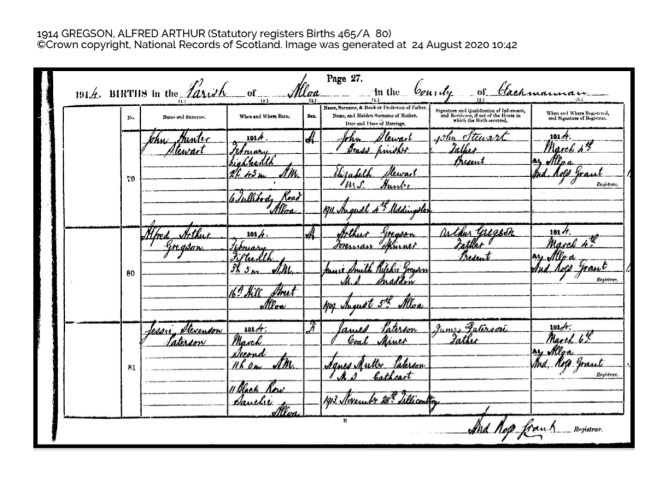
Sadly for this young married couple, heartbreak was just around the corner and tragically within one month of Alfred being born, his poor Mother Jeanie was to suddenly die, at the very young age of 25, on 18th March 1914, at the family home of 16A Hill Street, Alloa. She died as a result of an infection from breast feeding, which brought on cardiac failure, extremely hard to comprehend at such a young age. The full Death certificate entry has the cause of death as Parturition acute suppurative mastitis cardiac failure.
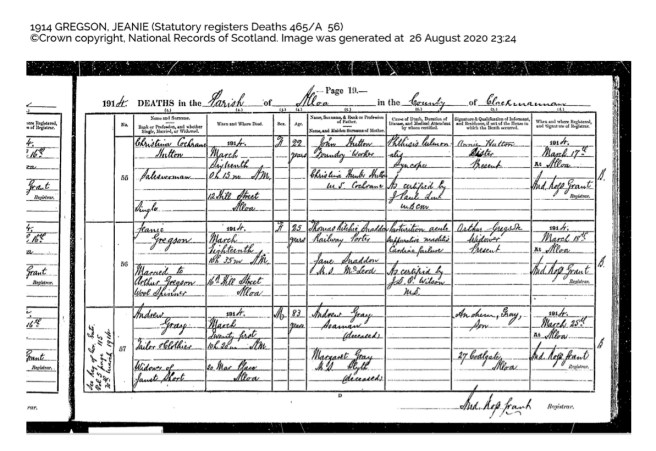
Poor Arthur Gregson was suddenly left with a one month old child and no wife, which doesn’t bare thinking about. At the time Arthur was a Foreman at a Mill, so how did he cope with work and caring for the needs of a small baby? He has his own grief to think about, but also the needs of a one month old baby, one can’t imagine how he coped.
At some point between 1914 and 1916 our young bereaved Arthur, who was living in Alloa in Scotland when Alfred was Born, decided to move back to his home town of Leicester. (Arthur had been born in Leicester, at his parents’ house on 24th December 1885). It was here in Leicester that Arthur managed to meet Frances Mary Wootton (My 1st Cousin 3 x Removed), who was from a tiny Village called Byford, in Herefordshire. Oral testimony places Frances Mary Wootton working in an Office in Leicester at the time, possibly even the Offices of Arthur Gregson’s Mill.
They were Married at Byford in Herefordshire, on 3rd June 1916 and further tragedy for poor Arthur and his Family, was literally just around the corner.
On 5th August 1920, little Alfred Arthur Gregson was accidentally shot and killed by a loaded shotgun, whilst he was on holiday with his step-mother Frances Wootton, at her Father’s Farm, Lower House Farm, in Byford, Herefordshire. Tragically the gun involved belonged to Frances Wootton’s younger Brother William Wootton (My 1st Cousin 3 x Removed).
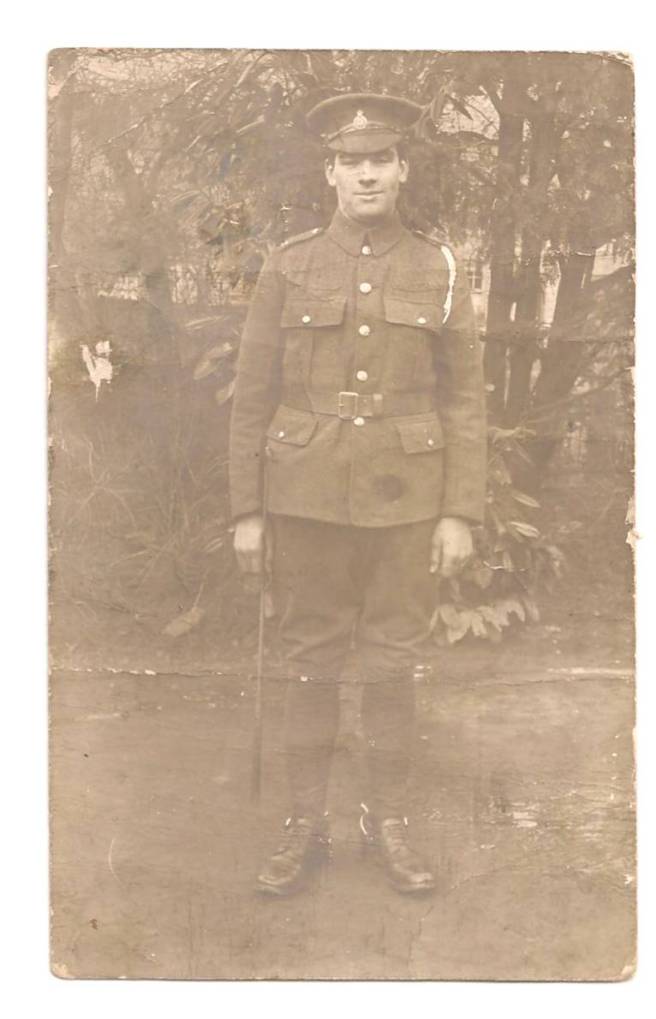 (William Wootton)
(William Wootton)

(Frances Mary Wootton)
Lower House Farm was Managed by Tenant Framer John Henry Wootton, Frances Wootton’s Father and the farm belonged to the Garnons Estate at Mansell Gamage and Sir John Cotterell was the landowner at the time.

(Lower House Farm)
A full Coroner’s inquest into the tragic shooting was carried out by the South Herefordshire Coroner, Mr. E.L.Wallis, but the records for this inquest have sadly not survived.
However the inquest was fully reported in the Hereford Journal on Saturday 14th August 1920 and I have fully transcribed the newspaper article below. It’s a grim read and certainly doesn’t paint my Ancestor William Wootton, in a very good light.
Hereford Journal Dated Saturday 14thAugust 1920
Accidentally Shot at Byford – Tragedy of a loaded Gun left on a wall.
The circumstances surrounding the Death (reported exclusively in last week’s issue of The Hereford Journal) of a little boy, Alfred Arthur Gregson, who was accidentally shot on Thursday at Lower House Farm, Byford, were inquired into at an inquest held at Byford on Saturday by the Coroner for South Hereford, Mr. E.L.Wallis.
The little victim was the Son of Mr. Arthur Gregson, Mill Foreman, of 27, Balfour Street, Alloa, Scotland and he had been staying with his Step-Mother and Sister at Lower House, the intention being to remain for some weeks in the beautiful district of Wye.
On Thursday whilst he was amusing himself by pumping water required for milk cooling, he was fatally shot through a farm lad unwittingly kneeling on the trigger of a loaded gun, which had been left lying on the top of a low wall, by William Wootton, son of Mr. John Wootton, of Lower House Farm.
Arthur Gregson, the Father, gave evidence of identification and said that Mr. Wootton was a relative by Marriage. He last saw his Son alive, in the last week in July at Alloa.
William Wootton a young man, who had had the gun out early that morning, but who said he had not had a shot, told how it was that the gun was left on the wall. He had placed it there he said, on returning and it was there when he set out for Weobley Sports at one o’clock and it was also there when he returned about five o’clock. At that time the little boy was pumping water into the milk cooling shed. Witness had only been in the house two minutes when there was an explosion. It was more like an explosion than a gun going off.
I rushed out to see what had happened he said and found the little boy lying on the ground. He was bleeding from the head. I started to carry him in and put some water on his head. He was not conscious. Arthur Howells, farm boy, was coming over the wall, from the foldyard. He seemed very frightened and to be looking to see what had happened. He came to me and I sent him for the Doctor, who came in half an hour and I sent for Mrs Preece, a neighbour.
The Coroner: How did it happen?
Witness: At first, I thought it was a cartridge that he was playing with, but the Doctor found some shots in his back and shoulders and pointed them out to me. Then we looked for shot marks on the House wall, near the pump and found about a dozen or more. The gun was then on the wall, lying crosswise and not pointing where the boy had been.
Is that all you know?
The cartridge was one of mine, as we found the wadding. In the presence of the Doctor, I opened the gun and both barrels were empty.
Can you explain how both were empty?
No
Had you fired one of the barrels in the Morning?
No
So, you left two cartridges in?
No, I never use the second barrel.
You had put in a cartridge?
No
But there was a cartridge in?
Yes
I had seen a pigeon, but did not aim at it and I think that if there had been one in, I should have fired. I don’t know whether there was a cartridge in.
Where did you find the wads?
The cardboard wad was four yards from the wall and the woollen wad was close to the pump.
Arthur Howells, aged 13, of Fish Pools, Byford, was then called. He was advised by the Coroner that he need not say anything, unless he liked, but if he did choose to say anything, he should keep nothing back.
As far as I know added Mr. Wallis, there is no reason you should keep anything back.
The boy then proceeded to state that after school hours he worked for Mr. Wootton. He had not been to school on Thursday and he went to Mr. Wootton’s at 4-45pm. He saw the gun produced on the wall and “Sonny” as they called the little boy Gregson was pumping. After putting a tube into the tub, the witness jumped onto the wall to get into the milk cooling place in the foldyard. He put his knee on the gun and as he got over the wall, the gun went off. He thought his knee fired the gun. The boy here indicated the position which the gun rested on the wall when he got over and said he thought he must have put his knee on the triggers. The gun fell from the wall onto the House yard as it went off. He saw the little boy on the ground and he jumped back onto the wall and ran to him as William Wootton came around the corner of the house. William Wootton was nowhere near when the gun went off. Wootton told him to go and fetch the Doctor and he did so. He did not open the breach of the gun and take anything out before going for the Doctor nor afterwards. He did not meddle with the gun after the accident excepting to put it back on the wall.
Dr. John Steed of Staunton-on-Wye, described the boy’s injuries and said his state was hopeless from the first. He died about 9-30pm. He had gunshot wounds in the right side of his head, face and shoulder. The cause of Death was shock from haemorrhage and injuries to the Brain and eyeball. The boy’s Step-Mother arrived shortly before he died. William Wootton had told him that there had been an explosion, but that he could not find the cartridge although he had found the wad. Witness said that the shot had evidently been fired through a gun and they noticed shot marks on the wall of the house. William Wootton pointed out the gun to him lying lengthwise on the garden wall. They opened the gun and there was no cartridge in it, but the left-hand barrel smelt strongly of explosion gases. It was evident that the gun had been recently fired. He got William Wootton to fire another cartridge at the barn wall at about the same distance as the yard wall was from the house wall. Comparing the two diameters of the spread of the shot, he concluded that the original shot was fired from the position suggested by Howells.
The Jury then retired to inspect the scene of the tragedy and Howells pointed out the position of the gun on the wall when it exploded and its position when he replaced it afterwards. The wall on which it rested stood about two feet high on the side of the house yard, but there was a considerable drop into the fold yard. The marks of the shot on the house wall were practically in a line with the position of the gun on the dividing wall as pointed out by Howells.
The Coroner, on the Jury’s return, said he thought there was no question that there was an incident, that it was due to the firing of the gun and that the firing was due to the boy Arthur Howells by accidentally kneeling on the triggers as he got over the wall. The gun was left on the wall by William Wootton. He thought the Jury perhaps would desire to express some opinion about it; probably they would think it was an act of carelessness and untidiness only too common. But he did not think they would have any duty beyond such an expression as he had intimated. Their verdict, no doubt, was that Death was due to shock, caused by the explosion of the gun left on the wall by William Wootton and that the boy Howells brought about the accident by kneeling on the gun. It was careless of the boy, but he was but a boy. They might have expected better things of William Wootton and he did not know whether they would think that William Wootton did himself justice by his evidence. He (the Coroner) did not think he did. Someone removed the cartridge from the gun and if William Wootton removed it, it was an extremely foolish thing in his own interests to have done. It was a piece of folly which pointed to a sort of cunning, but he did not think it was a cunning which had anything to do with the boy’s Death, or anything for which they could call William Wootton to account. He wished he had given his evidence as straightforwardly as Howells had.
The Coroner said he thought there was, as someone took the cartridge from the gun, which was a very foolish thing to do. He might have taken it out quite innocently, but he did himself a great deal of injustice, if he did take it away. He thought the Jury agree that it was a reprehensible to leave a gun on the wall and no doubt the great grief of the Father and Mother visiting there was due to that. He did not think there was anything they could call anyone to account for, but if at Byford they thought it was the right thing to leave a gun about like that, then the Education Acts had not done much for them. They could not suppose that Howells removed the cartridge and if he was sitting without a Jury, he would unhesitatingly say that William Wootton removed it. He was sure they would all feel the utmost sympathy with the bereaved Father and Mother (hear, hear).
The Jury deliberated in private for some little time. Ultimately Mr. Griffiths said they were agreed that it was a pure accident, through the gun going off accidentally and through Howells kneeling on it. They thought that William Wootton was careless in leaving the gun about, especially where there were little children.
The deceased little boy was laid to rest in Byford Churchyard on Monday.
I have subsequently found out that this is in fact incorrect, Little Alfred was laid to rest at Mansell Gamage, on August 9th 1920 aged 6 years.


I am left with so many questions that I know can never be answered:
Did William Wootton lie to cover himself at the inquest?
Did William Wootton leave the loaded Gun accidentally, but in blind panic, try to cover his tracks by lying?
Could William Wootton look his Sister in the eye after what happened, knowing his carelessness killed his Sister’s Stepson?
Was there a Family rift after what happened, did this cause irreconcilable differences between William and his Sister Frances?
Are the circumstances around the tragedy the reason why Arthur and Frances Gregson ended up emigrating to New Zealand? Or did they emigrate because of Arthur Gregson’s profession as a Mill Foreman? (Find out more in Part 3, New Zealand is only part of the story!)
How did poor Arthur Howells cope knowing that his actions killed a young boy, especially given the fact that Arthur himself, was only 13 at the time of the tragedy?
How much impact did this have on the rest of Arthur Howells life?
No story is ever fully complete, we will never know the full circumstances surrounding The Tragedy at Lower House Farm, but there is a postscript regarding some of those involved at the time. I have managed to uncover so much more to this story than I ever thought possible, thanks to the wonders of the internet and online records. What you have read so far, is only a part of the story, there is so much more to tell……………watch this space for part 3! You will be amazed, trust me!
I would like to say a special thanks to Anne Teesdale, for the wonderful pictures that you see here, of Lower House Farm and would also like to thank ‘Genie Friend’ Margaret Bailey for her wonderful help with locating New Zealand records and resources, which you will see a lot more of, in Part 3



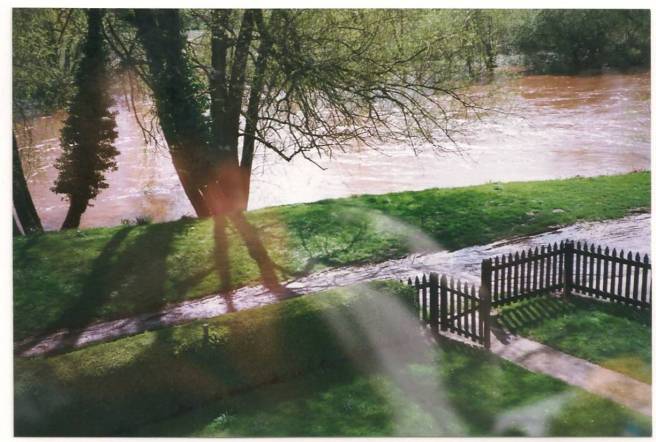
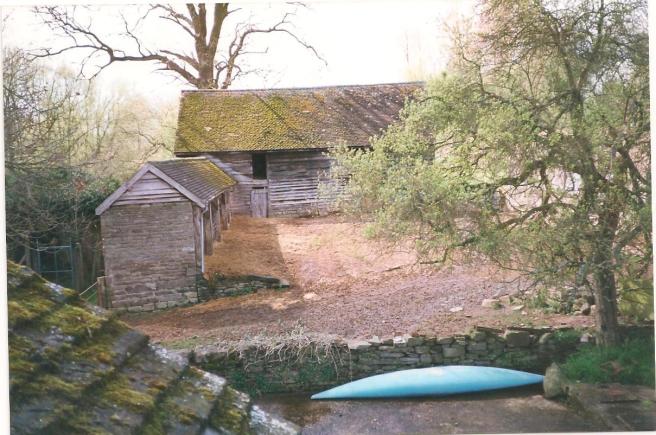
All My Blogs For Family Tree Magazine in one handy place


This is such a desperately sad story. You have to think of how it must have affected everyone involved. I hope some of the questions you pose will be answered in Part 3.
LikeLiked by 2 people
There is still a lot more sadness to come I’m afraid, but also a glimmer of hope
LikeLiked by 1 person
Jamais deux sans trois … may we learn from the tragic mistakes of others … requiescat in pace
LikeLiked by 2 people
Paul,
I’m looking forward to part 3. A sad story but you’ve obviously uncovered lots of details.
Just an observation, where you say that Arthur Gregson married Frances Wootton in June 1916, you then say that tragedy was to strike 2 months later. I couldn’t find what that tragedy was.
You then go on to tell of Alfred’s death in August 1920, 4 years later. Is that the one you meant?
Regards,
Ivy Brooks
LikeLiked by 2 people
Well spotted Ivy, I actually typed the date wrong in the original and worded it based on the wrong date, I spotted the date was wrong and corrected it, but failed to change the text to suit, so good spot and proves that you were paying attention! Thank you for spotting it and I’ve changed it now.
LikeLike
What a tragic and moving story. It’s hard to comprehend this much loss…at such young ages. Your careful research and these fabulous photos will keep their memories alive for future generations.
LikeLiked by 2 people
Thank you Marian part 3 also reveals a lot more sadness, far more than one family deserve, but there is some light at the end of a very dark tunnel
LikeLike
Terrific story, well told. Can’t wait for part 3!
LikeLiked by 2 people
Thanks Phil, sadly there is still more heartbreak to come but hopefully a little glimmer of hope as well
LikeLike
Tragic story…and amazing the marriage (so far in your story) seems to have survived it. How horrendous for all involved.
LikeLiked by 1 person
There’s certainly a lot more to come Teresa
LikeLike
Reblogged this on Pants free Genealogy.
LikeLiked by 1 person
Thank you that’s so kind of you
LikeLike
Sad story indeed but even more sadly, still so common nowadays. Carelessness with guns, accidents follow, children victims. I like to think of the parents emigrating, making a new start, but your foreshadowing isn’t very encouraging!
LikeLiked by 1 person
The future isn’t initially the brightest more darkness follows before the light eventually shines
LikeLike
This is a very interesting story about Lower House Farm. We have just become the owners of the nearby Lower House, Byford (yes it is confusing!). The photos you post here are actually fascinating old pictures of Lower House rather than Lower House Farm, with the exception of the second picture, which may be Lower House Farm. If you look at the chimneys you will see the houses are different. The Barns are also at Lower House, now sympathetically converted.
LikeLiked by 1 person
Thanks James for contacting me, i would be interested to see what it looks like now in comparison. I also have some more pictures if you are interested? My email address is chiddicks@yahoo.co.uk thanks for getting in touch
LikeLike
There is also a part 3 to the story
LikeLike